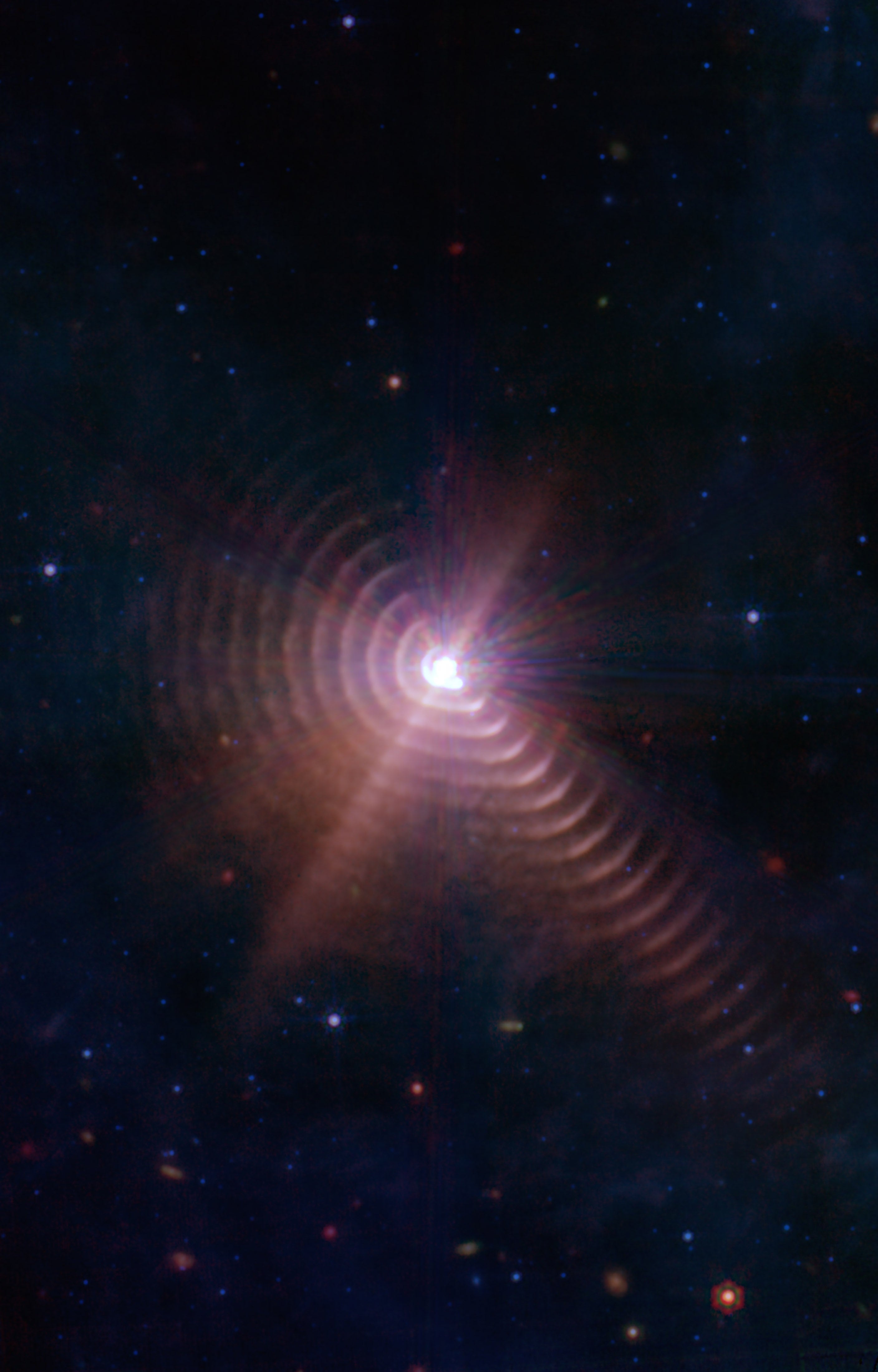Giant stars caught pushing dust around the cosmos, scientists say
Caught in the act, astronomers have finally measured a giant star blowing dust rings with its intense starlight and radiation

Your support helps us to tell the story
From reproductive rights to climate change to Big Tech, The Independent is on the ground when the story is developing. Whether it's investigating the financials of Elon Musk's pro-Trump PAC or producing our latest documentary, 'The A Word', which shines a light on the American women fighting for reproductive rights, we know how important it is to parse out the facts from the messaging.
At such a critical moment in US history, we need reporters on the ground. Your donation allows us to keep sending journalists to speak to both sides of the story.
The Independent is trusted by Americans across the entire political spectrum. And unlike many other quality news outlets, we choose not to lock Americans out of our reporting and analysis with paywalls. We believe quality journalism should be available to everyone, paid for by those who can afford it.
Your support makes all the difference.Intense starlight can actually push dust around the universe. That’s something astrophysicists have known was possible for years, but never directly observed — until now.
In a new paper published on Wednesday in the journal Nature, an international team of astronomers describe how the intense radiation of a binary star system is pushing dust plumes out and away from the twin stars on an eight year cycle.
It’s the first time they’ve caught stars in the act of accelerating dust away from them with the power of light.
“It’s hard to see starlight causing acceleration because the force fades with distance, and other forces quickly take over,” Yinuo Han, of Cambridge’s Institute of Astronomy and the first author of the Nature paper, said in a statement. “To witness acceleration at the level that it becomes measurable, the material needs to be reasonably close to the star or the source of the radiation pressure needs to be extra strong.”
Luckily for the researchers, they were observing a very energetic star system, the binary star WR140 in the constellation Cygnus. The system consists of two massive stars, a blue supergiant and a Wolf-Rayet star, the latter being a very active type star about 20 times larger than the Sun; Wolf-Rayet stars expel a lot of mass very rapidly, losing mass equal to that of the Sun in just 100,000 years.
In the case of WR140, the Wolf-Rayet star puffs out plumes of dust and soot every eight years, the result of the interactions between the two stars and the material flung loose of the Wolf-Rayet member of the binary pair.
“Like clockwork, this star puffs out sculpted smoke rings every eight years, with all this wonderful physics written then inflated in the wind like a banner for us to read,” study co-author and University of Sydney professor of astronomy Peter Tuthill said in a statement. “Eight years later as the binary returns in its orbit, another appears the same as the one before, streaming out into space inside the bubble of the previous one, like a set of giant nested Russian dolls.”
The researchers were able to monitor the plumes in the infrared part of the spectrum using the Keck Observatory telescope in Hawaii. Initially, their observations and the mathematics they used to model them didn’t match up. That’s when they realized the intense, gale-like force of the Wolf-Rayet star’s solar wind was not just pushing the dust plume, but accelerating them away from the star.
“In one sense, we always knew this must be the reason for the outflow, but I never dreamed we’d be able to see the physics at work like this,” Dr Tuthill said. “When I look at the data now, I see WR140’s plume unfurling like a giant sail made of dust. When it catches the photon wind streaming from the star, like a yacht catching a gust, it makes a sudden leap forward.”
Although the discovery is an astrophysical first, it likely won’t be the last. While most of the team’s observations were made with ground-based telescopes, they had help from the newly operational James Webb Space Telescope, and that space-based observatory should open up new possibilities for studying such exotic star systems, according to Ryan Lau, and astronomer with the National Optical-Infrared Astronomy Research Laboratory in Arizona.
“The Webb telescope offers new extremes of stability and sensitivity,” Dr Lau said in a statement. “We’ll now be able to make observations like this much more easily than from the ground, opening a new window into the world of Wolf-Rayet physics.”
Join our commenting forum
Join thought-provoking conversations, follow other Independent readers and see their replies
0Comments